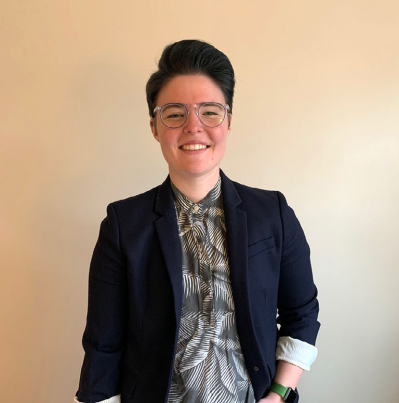
The Importance of Interdisciplinary Practice in the School Setting
March 31, 2021
Hopefully we have all been in at least one IEP meeting where a collection of team members sat around a table sharing their insights, hopes, goals, and action plans for a student. A meeting that didn’t feel rigid like some IEP meetings can feel, but rather flowed like a natural conversation. This meeting probably ran longer than it was supposed to and gave you ten more tasks to add to your to-do list, but it exemplified the importance of interdisciplinary practice.
If our goal is to help students feel successful across their environments, then we must strive to incorporate an interdisciplinary approach not just to our meetings but also into our daily therapy plans. As someone who works with preschool through high school students, I find this to be significantly impactful no matter the age of the student.
Here are four takeaways that I have found beneficial in my personal endeavor of integrating interdisciplinary practice in my day-to-day practice as an SLP:
1) Be curious and stay curious.
The foundation to consistent interdisciplinary practice is to be curious. Curiosity opens the door for others to share their knowledge and insight. It invites you into new spaces and provides you the opportunity to work with new people. It can be as easy as asking other professionals questions like, “Hey, how’s Johnny doing for you?” or “I noticed that Johnny is struggling with this, are you seeing that too?”. This creates an opening to share successes or bring to light barriers that are preventing the student from achieving success. Team members can then troubleshoot together, or share solutions that worked for the same barrier in another environment. For example, a casual question posed to our school social worker during lunch break revealed that she was having a difficult time following my student’s personal narratives during their sessions. That same barrier used to exist for me, but fortunately my student and I had already found a graphic organizer to solve this issue. The social worker needed that tool to be successful with our student. My student needed us to work together to ensure that success was attainable across environments.
2) Be flexible with what therapy should look like.
Our students don’t exist in silos and neither should our therapy. Interacting with your students across environments allows you to develop a broader, more naturalized understanding of what skills a student needs to feel successful. It also illuminates barriers that may be preventing them from achieving success. Seek opportunities to interact with your students outside of the therapy room. If you have a few minutes, sit with them for story time or free choice time in the classroom.. Go watch that class presentation that they’re nervous about. This is an easy way to slowly integrate yourself into the classroom environment without feeling intrusive. As I incorporate interdisciplinary practice into my therapeutic style, it changes the way I think about service delivery setting for my students. I often find myself writing IEPs that contain a mix of pull-out and push-in because I value the different perspective and opportunities that both environments give me. Additionally, be open to inviting professionals like occupational and physical therapists, special education teachers, paraprofessionals, psychologists, and social workers into your therapy space. This can feel vulnerable and intimidating at times, but as often as I question whether or not I know what I am doing, I have never had another professional question it. Be confident in your ability to teach others. With your guidance, they can help generalize a student’s skills into other environments as well as advocate for their specific needs.
3) Collaboration can be quick!
My emoji history will tell you that I’m a millennial, but my preferred communication style is actually face-to-face. As someone who is moving throughout the school building at least every 30 minutes, I am always running into other professionals in the hallway, the teacher’s lounge, the office, etc. I utilize these quick face-to-face opportunities to touch base regarding my students, check-in on their progress, share tips, or take on new challenges. Face-to-face communication isn’t always realistic or even preferred, especially if your time is split between multiple buildings or back-to-back therapy sessions. On days where my time is limited, I also use email to relay information. I email insights that I get from therapy, tips the teacher can try, or even just share funny moments. These emails aren’t long - just the highlights. That way when I do see that individual in person, the groundwork is there and I can spend my time asking follow-up and troubleshooting type questions. The more this becomes your routine, the less time and energy it takes. Eventually, it only takes a minute. A minute might not seem like a lot of time to fit in what we traditionally think of as collaboration, but when it starts to become a daily habit, those minutes add up and that collaboration becomes effortless and more importantly - consistent. Those minutes really reflect when the team sits down together during an IEP meeting and the collaboration is simply being continued.
4) Think beyond classroom teachers.
It’s easy to get stuck thinking that the person that we need to collaborate with the most is the classroom teacher, but I’ve come to realize that there are so many other adults who interact with our students every single day in and out of the classroom. The paraprofessional, the lunchroom worker, the office secretary, the support staff, the transition coordinator are just as important because oftentimes, they are just as invested in our student’s success. Sometimes they also have the ability to dedicate time and attention to our student that simply doesn’t exist for the classroom teacher due to large class sizes. Invest your time educating those who are open to learning and are willing to implement that knowledge when you’re not around. Even if they are not the classroom teacher.
If interdisciplinary practice was so easy, we all would be doing it, right? I’ll be the first to admit that there are real barriers to making it work: the teacher who is not interested at all; the scheduling nightmare of balancing pull-out and push-in services with a large caseload; different communication styles; to-do lists that never end… These can all make the idea of interdisciplinary practice feel unrealistic. While it is not a one size fits all approach, small tweaks to our day-to-day practices make it easier to incorporate. Start small. Pick one student a week to collaborate about. Find one staff member in your building to invite into your therapy space (I’ve had the most success with OT and special education teachers). Find 15 minutes in your week to interact with a student outside of your therapy room. Keep realistic expectations for yourself. This might not work for every single student on your caseload, or even every single team member on a team. That’s okay. Interdisciplinary practice is a practice that builds over time. In building that practice, you are building your student’s foundation for success. You’ve got 10 minutes for that, right?
About the Author

Sarah B. Bromley M.S. CC-SLP, has a blast working with the entire educational age span from preschool through high school. Sarah received her Master’s degree from Marquette University in 2018. When she is not wearing her speech hat, she loves to grab the biggest cup of coffee from her local coffee shop while taking her dog Ziggy for a walk around the lake. Feel free to email Sarah at sbromley3232@gmail.com



